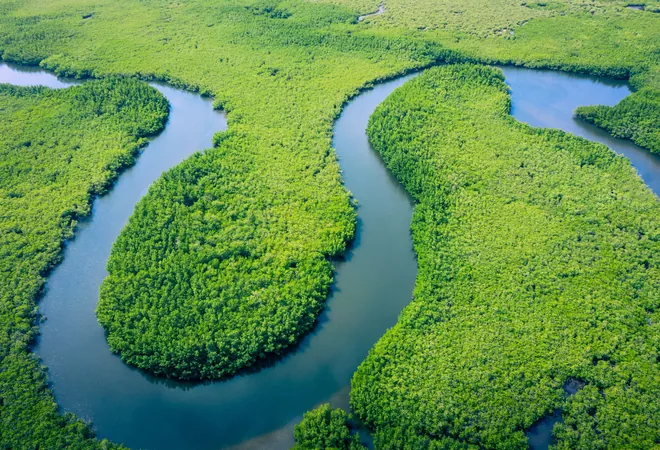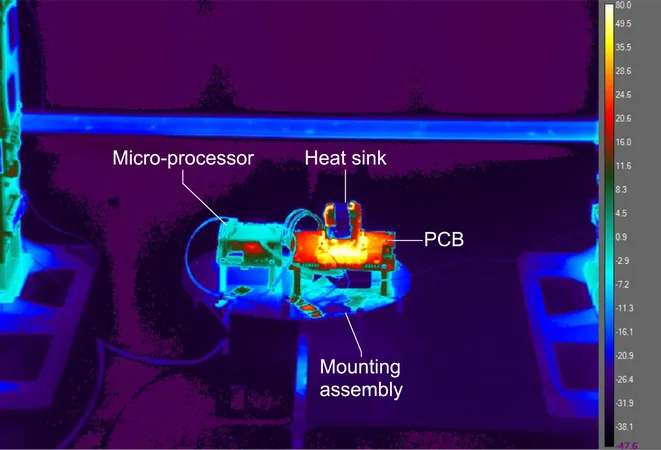
Shocking Discovery: Rivers Are Spilling Ancient Carbon Dioxide Into the Atmosphere!
2025-06-05
Author: Mei
A Groundbreaking Study Reveals Surprising Carbon Sources
Scientists have made an astonishing revelation: rivers around the globe are releasing a staggering amount of carbon dioxide into the air, and not just from recent organic materials. This new research indicates that ancient carbon, stored deep in the earth for thousands or even millions of years, is now escaping back into the atmosphere through river surfaces.
Revolutionizing Our Understanding of the Carbon Cycle
Led by a team from the University of Bristol, this study reshapes our understanding of the global carbon cycle. It suggests that the role of plants and soils in removing carbon from the atmosphere may be even more significant than previously thought.
Surprising Findings About Carbon Sources
Previously, scientists believed that the carbon emissions from rivers—methane and carbon dioxide—were primarily from decaying plant matter recent to the past 70 years. However, this new research reveals that more than half, specifically around 60%, of this CO2 actually originates from carbon buried for centuries and even millennia.
"The results were a surprise to us; old carbon stores are leaking far more into the atmosphere than we had anticipated," expressed lead author Josh Dean, an associate professor of biogeochemistry.
A Comprehensive Global Study
The researchers conducted an extensive analysis of over 700 river reaches across 26 countries, spanning every continent except Antarctica. Utilizing advanced radiocarbon dating techniques, they determined the age of the carbon dioxide and methane released.
By measuring the levels of carbon-14, they could differentiate between 'young' and ancient carbon sources, uncovering that roughly half of the emissions came from deep soil layers and weathered rock.
The Climate Impact of River Emissions
Rivers, often ignored in climate discussions, significantly contribute to global emissions, releasing about two gigatons of carbon annually. In contrast, human activities contribute around 10 to 15 gigatons each year. This means river emissions are a vital component of the natural carbon cycle, now found to be more dynamic than previously thought.
Explained co-author Gemma Coxon, an associate professor of hydrology at Bristol, "These emissions are crucial at a global scale. Over half may originate from carbon stores we once thought stable, indicating a need to reevaluate these vital aspects of the carbon cycle."
Questions Arising and Future Research Directions
This groundbreaking discovery raises critical questions. How might the flow of ancient carbon change over time, especially with a warming climate and land-use alterations? The team aims to continue their research, exploring variations in the age of river carbon emissions beyond the current study's parameters.
Understanding these hidden sources of carbon is essential as it emphasizes the natural ecosystems' role in offsetting emissions. Interestingly, researchers propose that plants and soils may already be compensating for this unexpected release by sequestering approximately one additional gigaton of CO2 per year.
Necessary Improvements for Climate Strategies
These findings highlight the urgent need for more accurate carbon budgets. As efforts to combat climate change intensify, comprehending the elusive sources and sinks of carbon in our environment becomes paramount for formulating effective greenhouse gas reduction strategies and safeguarding the future of our planet.


 Brasil (PT)
Brasil (PT)
 Canada (EN)
Canada (EN)
 Chile (ES)
Chile (ES)
 Česko (CS)
Česko (CS)
 대한민국 (KO)
대한민국 (KO)
 España (ES)
España (ES)
 France (FR)
France (FR)
 Hong Kong (EN)
Hong Kong (EN)
 Italia (IT)
Italia (IT)
 日本 (JA)
日本 (JA)
 Magyarország (HU)
Magyarország (HU)
 Norge (NO)
Norge (NO)
 Polska (PL)
Polska (PL)
 Schweiz (DE)
Schweiz (DE)
 Singapore (EN)
Singapore (EN)
 Sverige (SV)
Sverige (SV)
 Suomi (FI)
Suomi (FI)
 Türkiye (TR)
Türkiye (TR)
 الإمارات العربية المتحدة (AR)
الإمارات العربية المتحدة (AR)